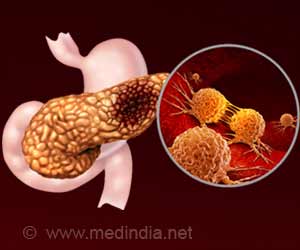Pancreatic cancer cases are on the rise. The biomarker approach could reduce the chance of developing pancreatic cancer.

‘Discovery of biomarkers is a key step toward a clinical approach for categorizing lesions on the pancreas as cancerous or non-cancerous.’





“That’s why we shifted our focus to these precancerous cysts, known as intraductal papillary mucinous neoplasms, or IPMNs,” Allen said. “Most IPMNs will never progress to pancreas cancer, but by distinguishing which ones will progress, we are creating an opportunity to prevent an incurable disease from developing.” Allen and colleagues used a sophisticated molecular biology tool called digital spatial RNA profiling to home in on specific areas of the cyst with high- and low-grade areas of abnormal cell growth.
Pancreatic Cancer Biomarkers
Previous methods to characterize IPMNs have been less precise and have not been able to identify particularly accurate markers of cancer risk. Digital spatial profiling, however, allows researchers to choose individual groups of cells for analysis. This enabled the Duke researchers to identify a host of genetic mutations that both fuel and potentially suppress pancreatic cancer development.The team also identified markers for discriminating between the two leading variants of IPMN and found distinct markers for defining a third common variant that generally results in less aggressive disease.
“We found very distinct markers for high-grade cell abnormalities, as well as for slow-growing subtypes,” Allen said. “Our work now is focusing on finding it in the cyst fluid. If we can identify these unique markers in cyst fluid, it could provide the basis for a protein biopsy that would guide whether we should remove the cyst before cancer develops and spreads.”
Allen said current diagnostic strategies -- including clinical, radiographic, laboratory, endoscopic, and cytologic analysis -- have an overall accuracy of approximately 60%.
Advertisement
He said some studies suggest inflammation plays a role. A clinical trial at Duke, led by Allen, is testing whether an anti-inflammatory therapy could reduce the development of cancer in patients with IPMN.
Advertisement
Source-Eurekalert












